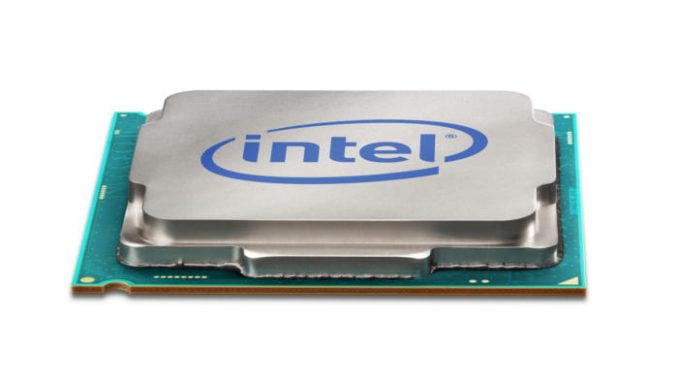
![]()
If you were expecting to buy laptops with Intel’s next-generation Core chips—code-named Cannon Lake—by the end of this year, you may be disappointed.
There’s a chance that shipments of Cannon Lake—Intel’s first on the 10-nanometer production process—may slip into next year.
Intel previously said Cannon Lake would ship by year’s end, but that’s now uncertain.
Whether Cannon Lake shipments will happen before or after Christmas is hard to predict, Venkata Renduchintala, president of Intel’s PC, IoT, and chip design businesses, said earlier this week at an Intel manufacturing event.
“In terms of first shipments, whether it’s before the end of the year, or just after the beginning of [next] year, it’s too close to call,” Renduchintala said.
Intel will still deliver Cannon Lake to PC makers within an appropriate timeframe, and there is no “perturbation in launch trends,” Renduchintala said.
The first Cannon Lake chips will be targeted at low-power laptops and 2-in-1s. PC makers typically need time to test the chips in laptops, so availability of the chips in mainstream PCs may drag into 2018.
Mass production of 10-nm chips will begin in the first half of 2018. Initial production runs of the chips will start in the second half of this year.
So don’t expect Cannon Lake laptops during this year’s holiday season. Instead, users will be able to get PCs with 8th Generation Core processors, which are made on the 14-nm process. PCs now are available with 7th Generation Core processors code-named Kaby Lake.
Those 8th Generation Core laptops may be more attractive to customers. The first 10-nm Cannon Lake chips will be slower than 14-nm 8th Generation Core processors. Intel acknowledged the speeds during the manufacturing event, with a chart showing 10-nm chips catching up with 14-nm chip performance in one to two years.
In theory, the 10-nm chips should be faster than the 14-nm chips. But the first low-power Cannon Lake chips will have fewer transistors, and won’t be comparable to the mature 14-nm chips with more transistors.
But Cannon Lake is expected to beat its low-power Kaby Lake predecessors—which also have fewer transistors—on performance. Cannon Lake could replace low-power Core M/Y Kaby Lake chips, which are targeted at lightweight laptops and 2-in-1s.
By the time Cannon Lake ships, it will be competing with AMD’s Zen-based chip code-named Raven Ridge, and Qualcomm’s ARM-based Snapdragon 835, which will be introduced in low-power Windows 10 laptops and hybrids later this year.
The branding of Cannon Lake chips hasn’t been finalized. But they won’t be part of the 8th Generation chip lineup, and will have a separate branding, Intel has said. That could create confusion among PC buyers.
In the past, Intel has first upgraded PC chips to new architectures. But as the PC market flattens and the server market grows, Intel is switching priorities and giving server chips first dibs on architectural upgrades. Cannon Lake could be the first step in that transition.
Intel executives were telling media and analysts at the event to separate Core chips from the manufacturing process, which remains an important factor in advancing performance in processors.
“I don’t necessarily think our Core generations are going to be synchronized necessarily with process node evolutions that may happen or may not happen,” Renduchintala said.
Intel once took pride in advancing manufacturing alongside chip architectures, but that’s now less of a priority for the company.
The 8th Generation Core processors will be the unprecedented fourth chip architecture on the 14-nm process. Intel has typically advanced chips two times with each manufacturing process, which became known as the “tick-tock strategy,” but making chips smaller has become challenging.
As a result, the company is extending the life of each manufacturing process, with tweaks to cram more transistors and squeeze more performance out of chips. Intel has a goal of delivering a minimum of 15 percent improvement in chip performance on an annual basis.
